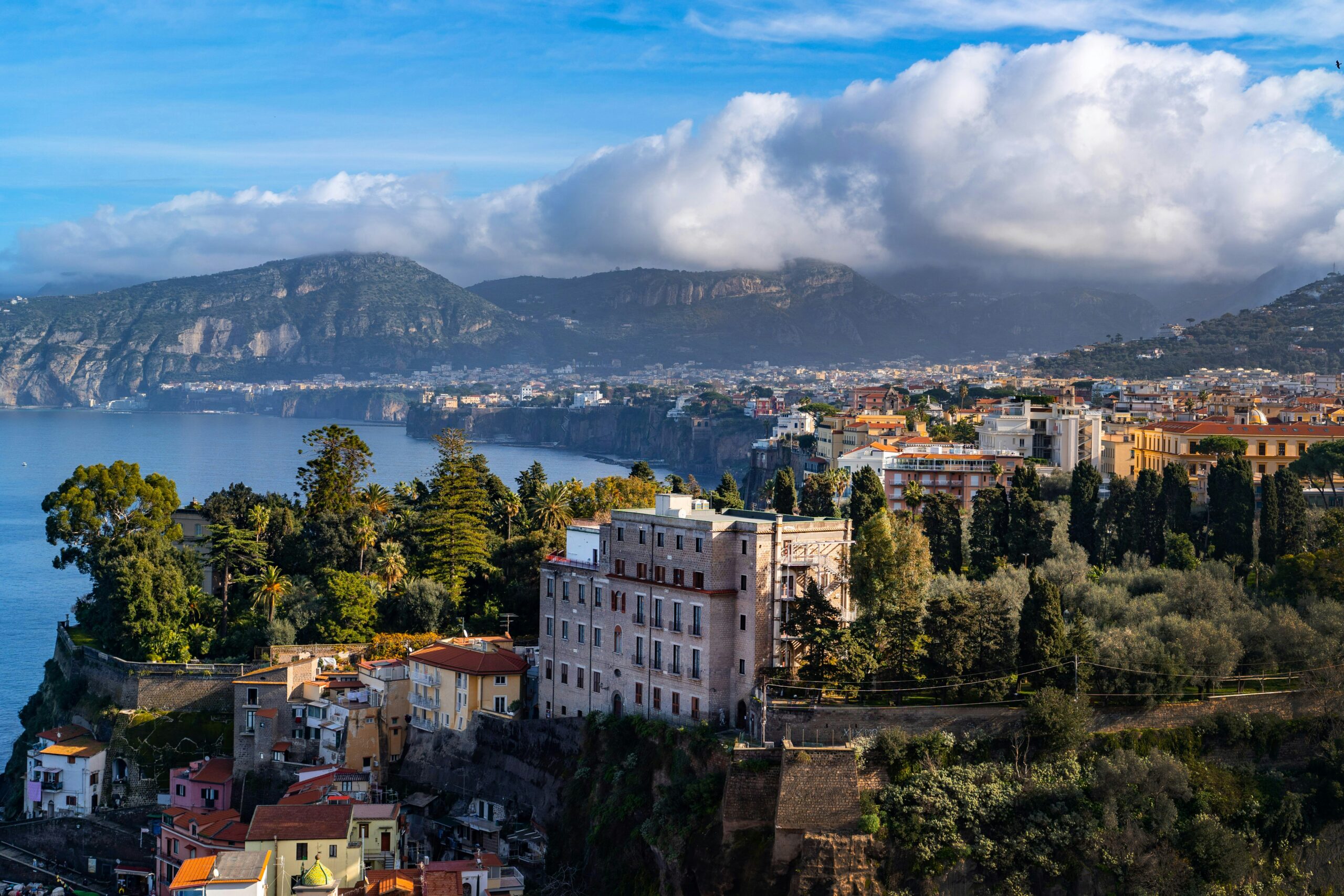
Perched on the majestic cliffs overlooking the Bay of Naples, Sorrento is a town rich in history and charm. Its cobblestone streets, lemon-scented air, and panoramic vistas have attracted visitors for centuries. Let’s take a simple journey through time to explore the enchanting history of this delightful place.
Ancient Beginnings
Sorrento’s story begins thousands of years ago. The region was first inhabited by the Oscan people around the 6th century BC. Later, the Greeks arrived and named the town “Surrentum.” They brought with them their culture and traditions, laying the foundation for what would become a vibrant community.
Roman Influence
In 89 BC, Surrentum became part of the Roman Republic. The Romans quickly recognized the area’s beauty and strategic location. Wealthy Romans built grand villas along the coast, remnants of which can still be seen today. Sorrento thrived as a resort town, offering a peaceful retreat from the bustling cities.
The Rise of Christianity
As the Roman Empire declined, Christianity began to spread. Sorrento became an important religious center, with the construction of churches and the establishment of a bishopric in the 5th century. The town’s people embraced the new faith, which played a significant role in shaping its culture.
Medieval Challenges
During the Middle Ages, Sorrento faced numerous challenges. It was attacked by Saracen pirates in the 9th and 10th centuries, leading to the construction of defensive walls and towers. Despite these threats, the town maintained its autonomy and continued to develop.
The Influence of the Normans and Angevins
In the 11th century, the Normans conquered southern Italy, including Sorrento. They brought stability and integrated the town into the Kingdom of Sicily. Later, the Angevin dynasty took control, and Sorrento became part of the Kingdom of Naples. These periods saw growth in trade and culture.
Renaissance Flourishing
The Renaissance brought a cultural revival to Sorrento. Art, literature, and philosophy blossomed. One of the town’s most famous sons, Torquato Tasso, was born in 1544. A celebrated poet, Tasso is best known for his epic work, Jerusalem Delivered. His legacy is honored throughout Sorrento, including a statue in the main square.
Under Spanish Rule
In the 16th and 17th centuries, Sorrento came under Spanish rule. The town’s defensive structures were strengthened to protect against pirate raids. The Bastion of Parsano, a section of the ancient city walls, stands as a testament to this era. It has been restored and is open for visitors to explore.
The Grand Tour Destination
In the 18th and 19th centuries, Sorrento became a popular stop on the Grand Tour—a journey through Europe undertaken by young aristocrats. The town’s stunning scenery and mild climate attracted writers, artists, and musicians. Famous visitors included Lord Byron, Goethe, and Charles Dickens, who found inspiration in Sorrento’s beauty.
Unification and Modernization
After the Unification of Italy in 1861, Sorrento began to modernize. Improved roads and the introduction of railways connected the town to Naples and beyond. Tourism grew as hotels and amenities were built to accommodate visitors seeking the idyllic seaside experience.
World Wars and Resilience
Sorrento faced hardships during the World Wars but escaped major destruction. The resilience of its people allowed the town to recover quickly. Post-war, tourism flourished anew, and Sorrento embraced its role as a beloved destination while preserving its historical charm.
Sorrento Today
Today, Sorrento is a blend of the old and the new. The historic center is a maze of narrow alleys filled with shops, cafes, and artisans crafting traditional goods. Landmarks like the Cathedral of Sorrento, the Cloister of San Francesco, and the ancient city walls offer glimpses into the past.
The town continues to celebrate its rich heritage through festivals, such as the Feast of Sant’Antonino, honoring its patron saint, and various cultural events that keep traditions alive. Sorrento remains a gateway to the Amalfi Coast, Pompeii, and the island of Capri, attracting visitors from around the world.
Have you visited Sorrento or have a favorite historical spot in the town? Share your stories in the comments below!
